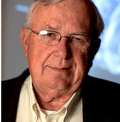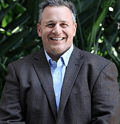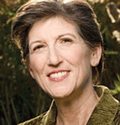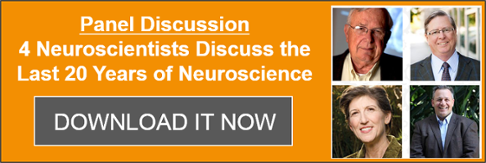It's 20 years since four visionary neuroscientists combined their brain research with emerging computer technologies to develop some exercises to help children with reading difficulties.
The work of the scientists, Dr Michael Merzenich, Dr Paula Tallal, Dr Bill Jenkins and Dr Steve Miller proved that the underlying cognitive processes that influence speech and language problems could be identified—and permanently improved.
Their research and the exercises they built led to the development of the Fast ForWord program.
 20 year commemorative conference
20 year commemorative conference
To commemorate this 20-year milestone, the four founding neuroscientists are participating in Scientific Learning Corporation’s Visionary Conference in San Diego on March 3-5, 2016.
They will be reviewing how far we've come in our understanding of the brain and learning, and where the science, now known as educational neuroscience, is headed.
Out of the laboratory to improve lives of learners around the world
Now two decades later those early exercises have been expanded into today’s suite of 10 Fast ForWord programs which train and improve much more than just reading.
Fast ForWord now:
- Trains thinking skills - memory, attention, thinking speed and the ability to sequence sounds, words and ideas.
- Improves all aspects of reading including comprehension and fluency
- Helps students enhance their written expression, including grammar, punctuation and vocabulary
- Builds students’ learning capacity regardless of their starting level – whether learning disabled or gifted or anywhere in between
- Develops the English Language Brain, and is now being used by English language learners around the world
- Has programs suitable for learners from kindergarten through to adults
- Includes the Reading Assistant Online Reading Coach, which is the only online reading help that uses speech recognition to support and correct students as they read aloud.
- Has more than 250 research papers published which confirm its effectiveness
- Supported over 2 million learners around the world to improve all aspects of their learning and reading
Founding scientists’ presentations:
The Neuroplasticity Revolution - Dr. Michael M. Merzenich
 How far we’ve come! Where can we go from here? What major learnings have come out of the last 20 years of research on brain plasticity, and how have these been applied to improving learning or brain functioning in children and adults?
How far we’ve come! Where can we go from here? What major learnings have come out of the last 20 years of research on brain plasticity, and how have these been applied to improving learning or brain functioning in children and adults?
- What is the current state of our efforts to “deliver the goods” from this science to help children and adults who struggle? How are we progressing in applying neuroplasticity-related science to normalize brains and increase resilience for children at high risk for early-life catastrophe expressed as an addiction, mental illness, and social disorder?
- The history of brain plasticity: how it was discovered, what we’ve learned so far, and what implications this research has on the future of intervention
- How our understanding of new findings related to autism, learning disabilities, the aging brain, at-risk children etc., is impacting our potential treatment of these conditions
What Does the Future Hold? - Dr Steven L Miller
-
 Neuroscience in education is a rapidly growing field of study; we’re just scratching the surface.
Neuroscience in education is a rapidly growing field of study; we’re just scratching the surface.
- Given the changes we’ve seen over the last 20 years, what might we expect in the next 20 years for brain-based learning and for Fast ForWord?
- We can use what we know now about the past to make some predictions about the future.
- How “brain-based learning” is changing our view of learning: from the “what” to the “how” of how children learn.
- How Fast ForWord has always been at the forefront of this field.
- What we know now that can be used to help the next generation of struggling learners, how motivational techniques are incorporated, why feedback is presented the way it is, and more.
Dyslexia Research and Remediation – Dr Paula Tallal (A summary of her testimony to the USA House of Representatives)
-
 Failing to learn to read is not life threatening, but it can be life-destroying.
Failing to learn to read is not life threatening, but it can be life-destroying.
- Review of 20+ years of research on why many children fail to learn to read effectively
- The risk factors for weak phonological awareness
- How the risk factors can be addressed in schools and clinics using the principles of neuroplasticity using tools already proven to be effective.
The Secret Sauce in Fast ForWord: Content Selection and Motivational Designs - Dr. William M. Jenkins
 The Fast ForWord Language series and the Fast ForWord Reading series have been used by millions of learners to improve language and reading skills.
The Fast ForWord Language series and the Fast ForWord Reading series have been used by millions of learners to improve language and reading skills.
- These products were designed with experts in neuroscience, psychology, language development, reading development as well as engineering and animation.
- Both series of Fast ForWord products build and strengthen essential foundational skills.
- The design philosophy and specifics behind the content, implementation approach and motivational techniques used to engage students in effective language and reading skill acquisition.
- The four principles necessary to make efficient and enduring brain change
- How these four principles are incorporated into the design of every exercise of Fast ForWord
- What is “hidden” in the program that makes it so powerful
- How and why the exercises adapt to each learner
- How motivational techniques are incorporated
- Why feedback is presented the way it is
Related Posts
250 Research Studies Published on Fast ForWord & Reading Assistant
"Phenomenal" Improvements for son after Fast ForWord, says father




